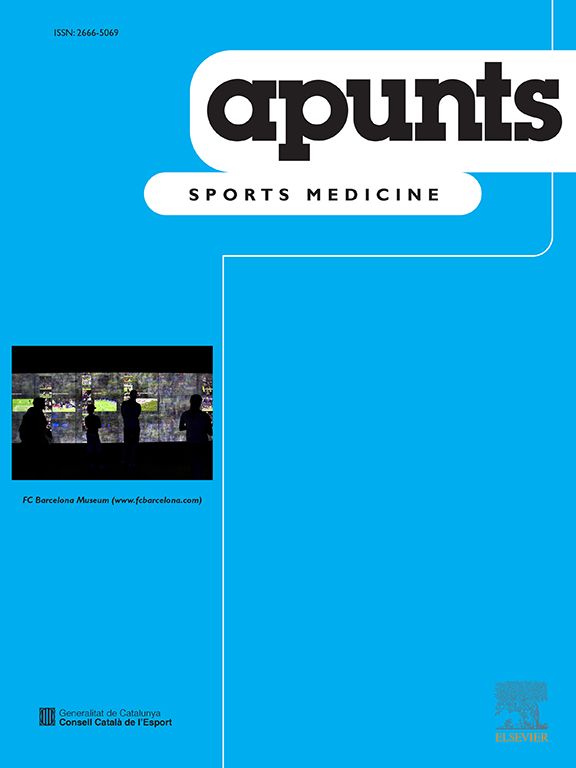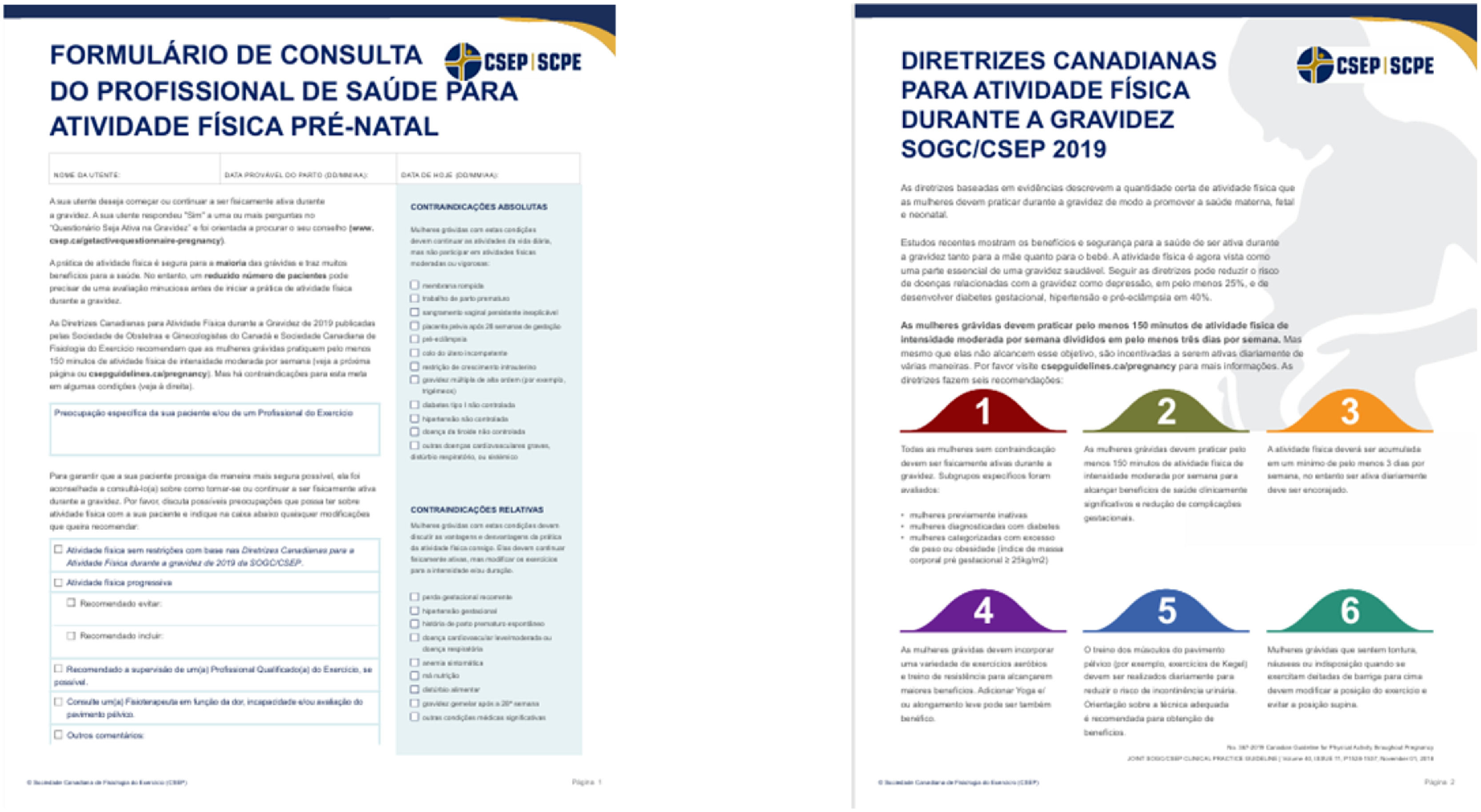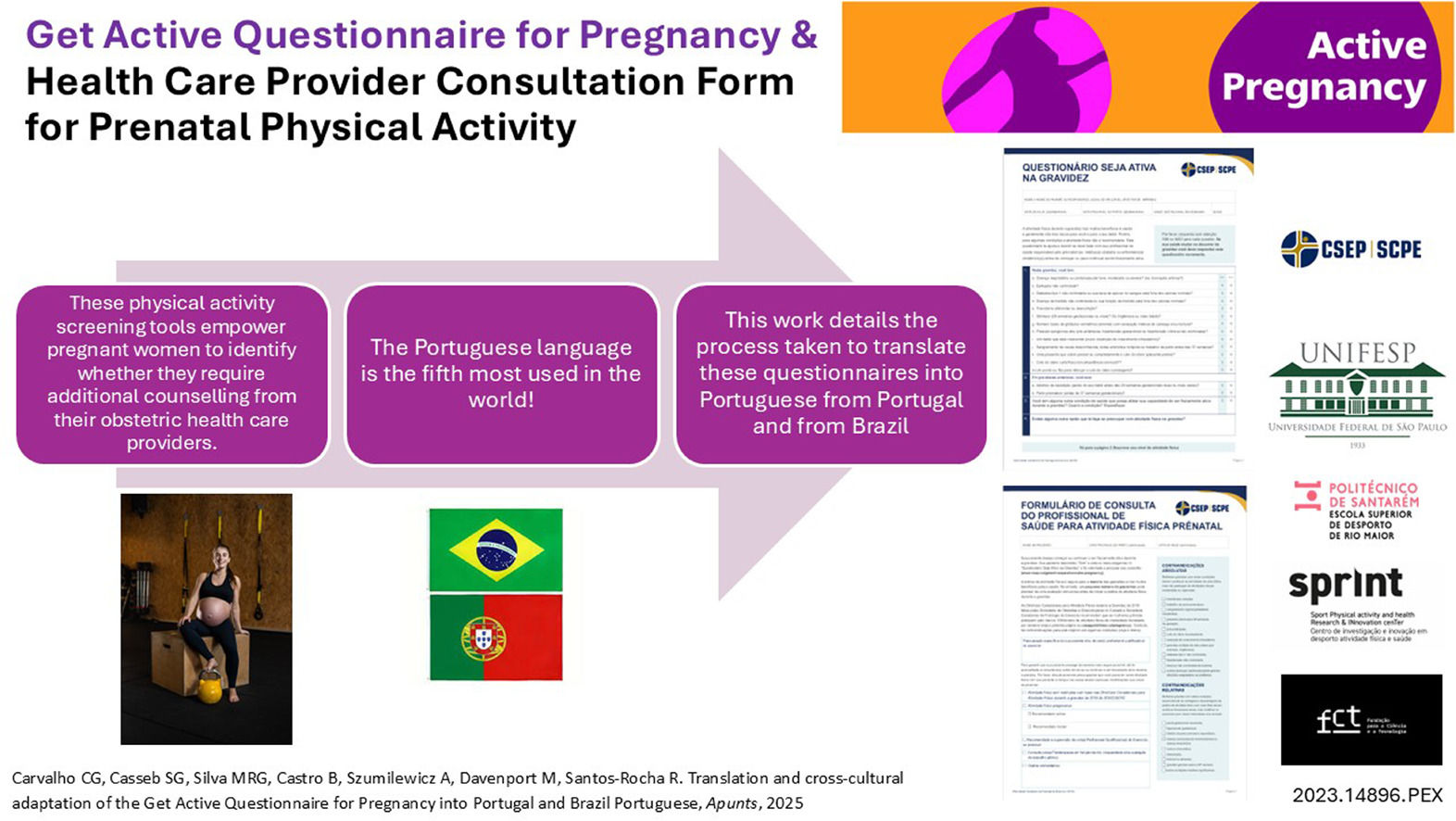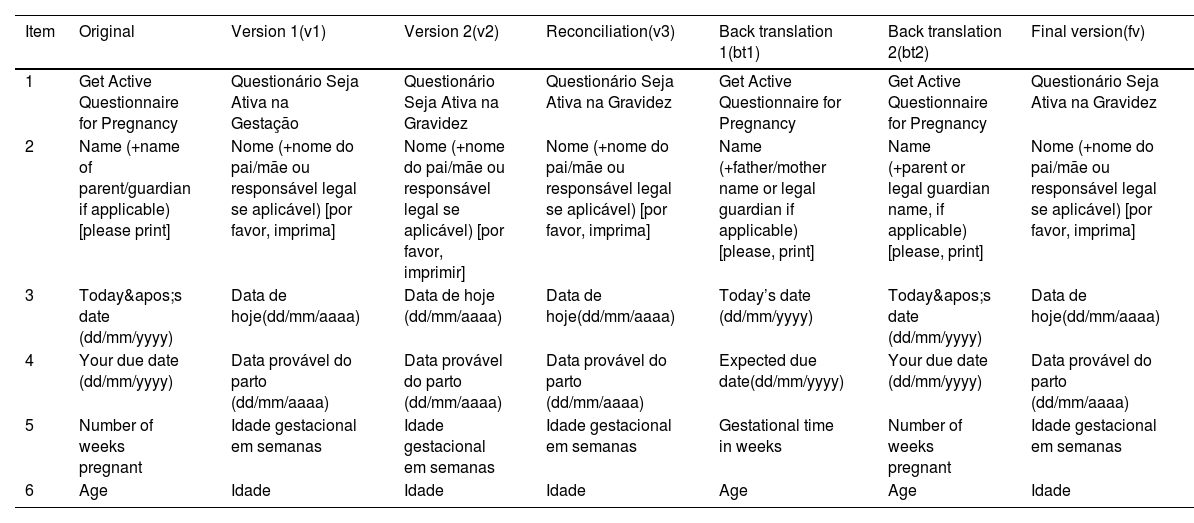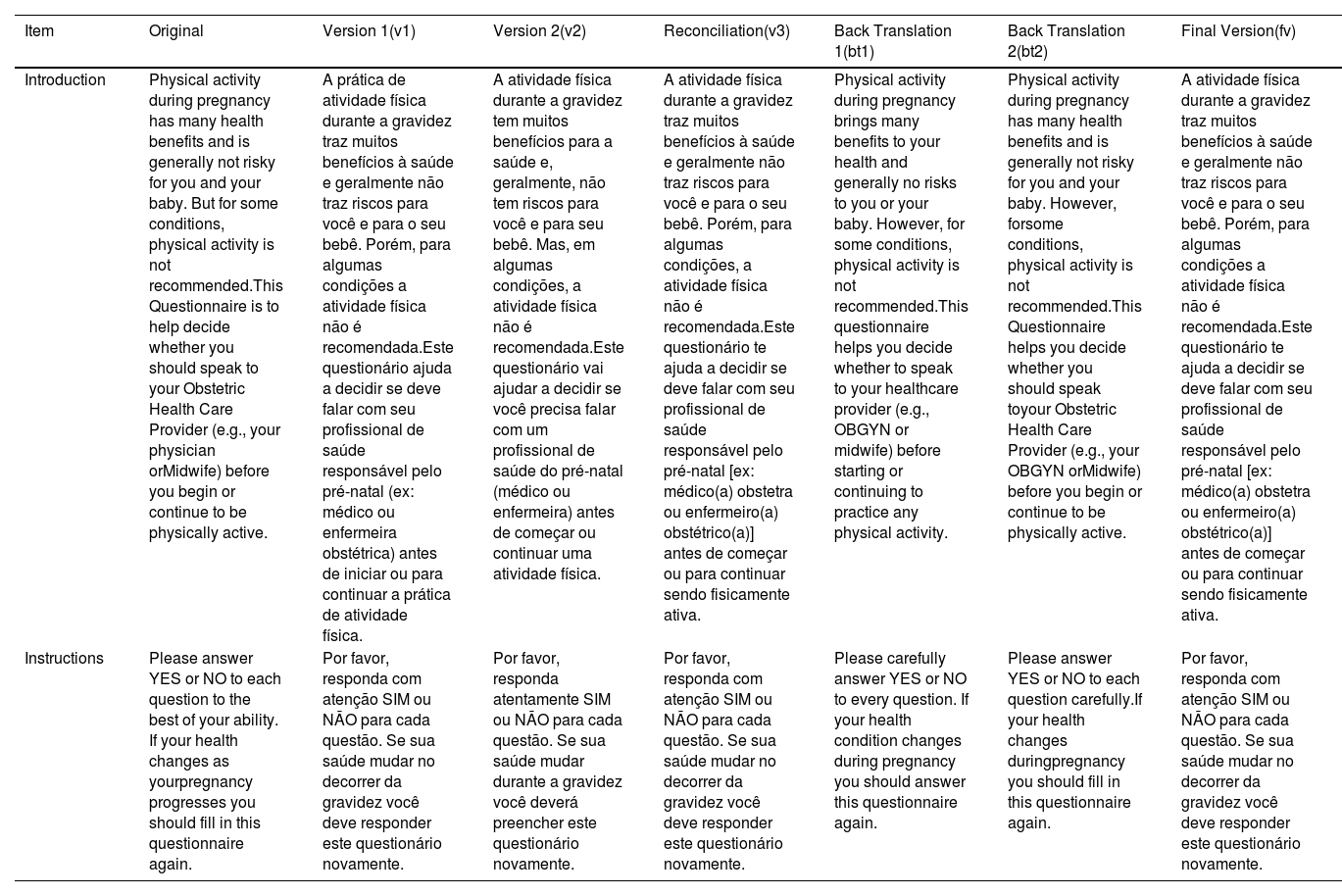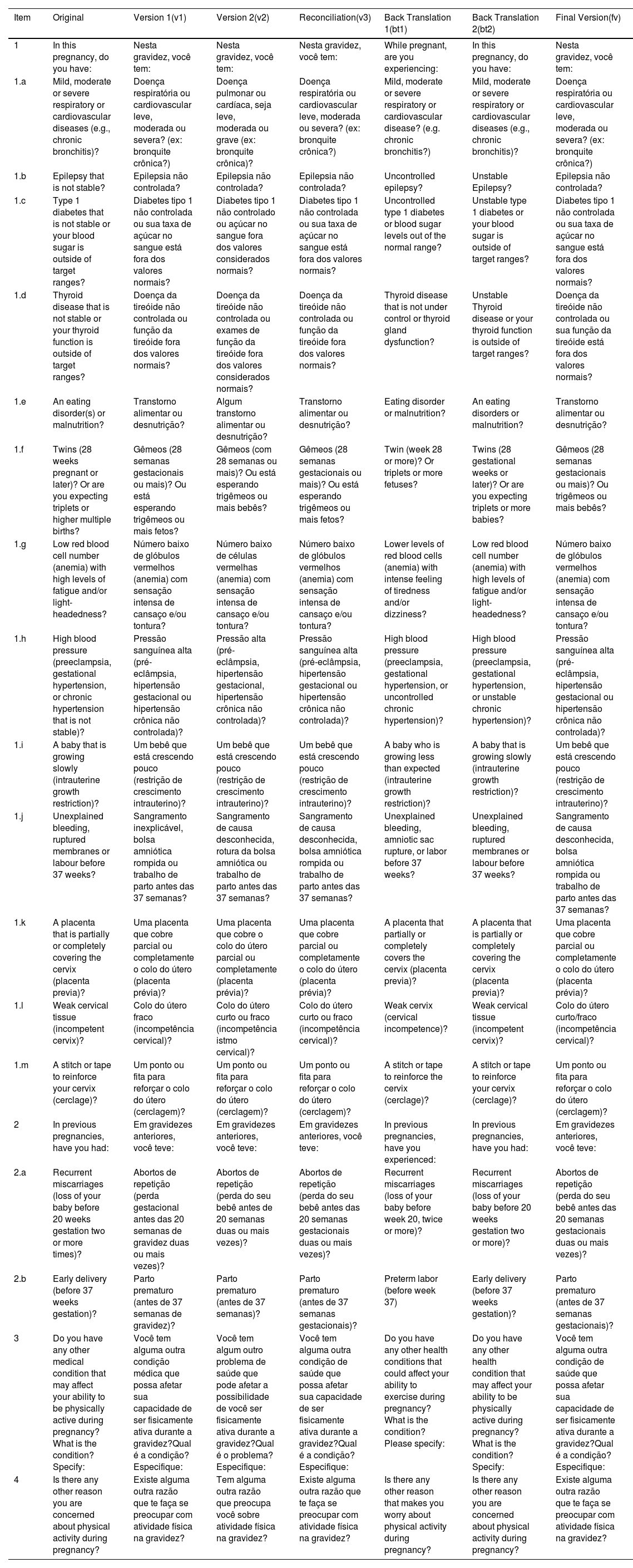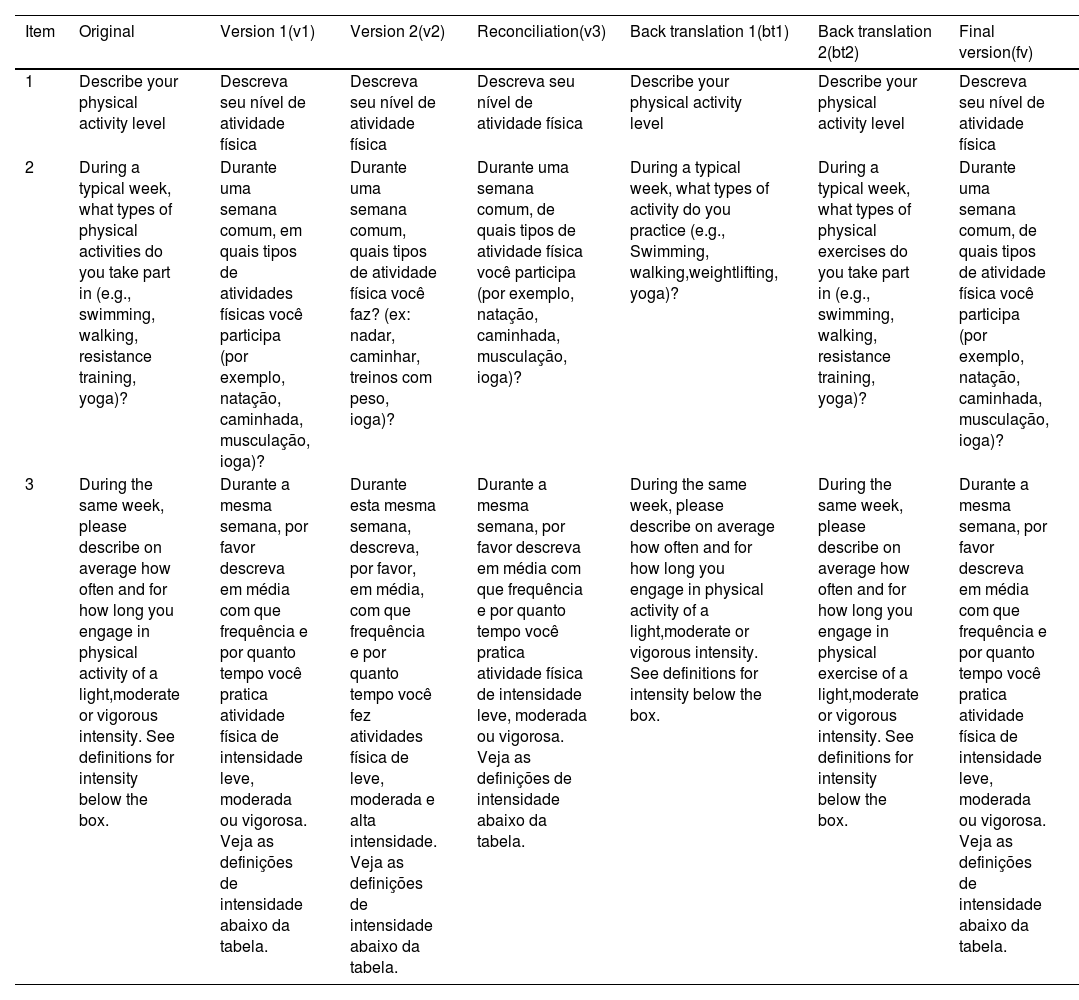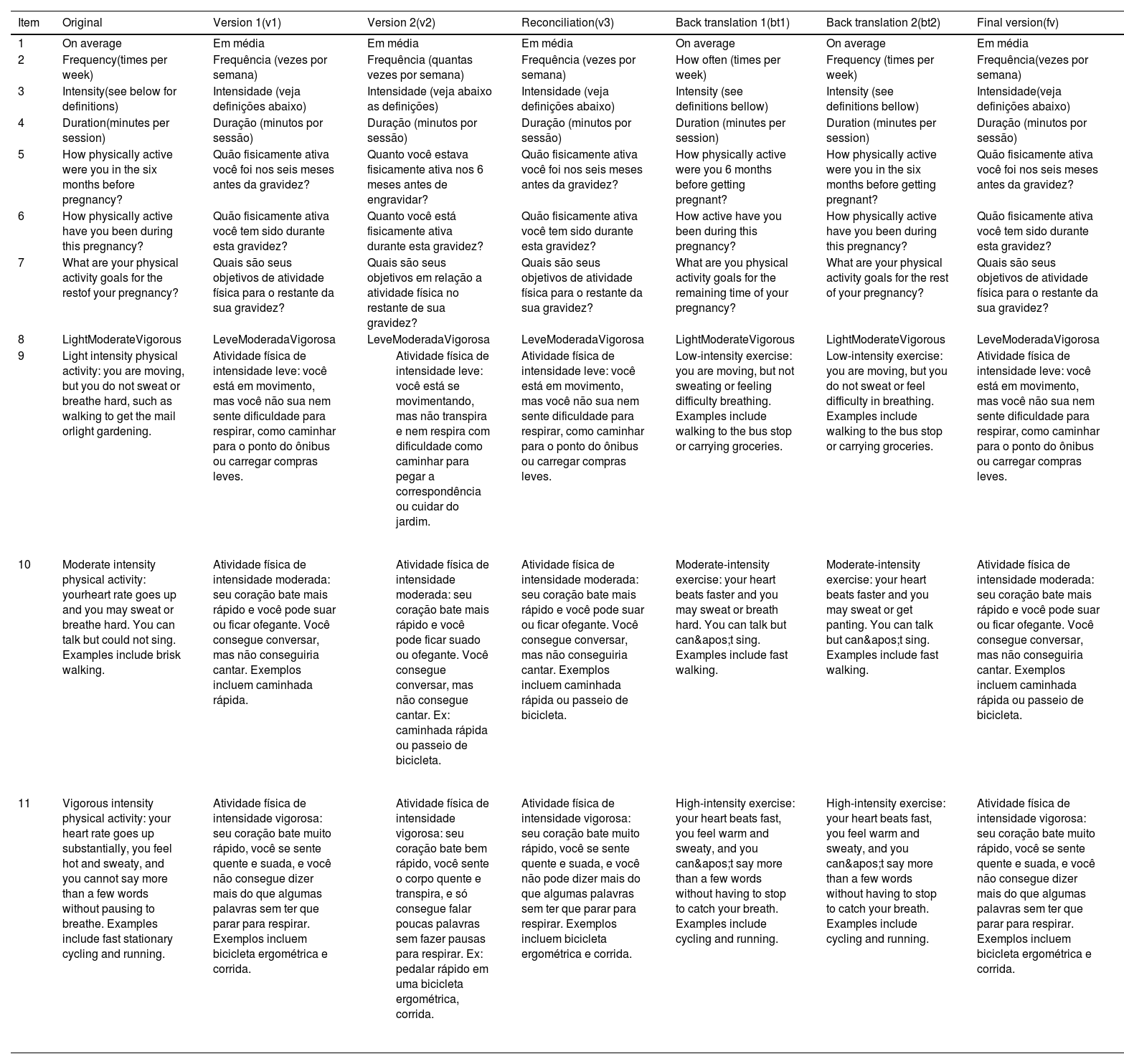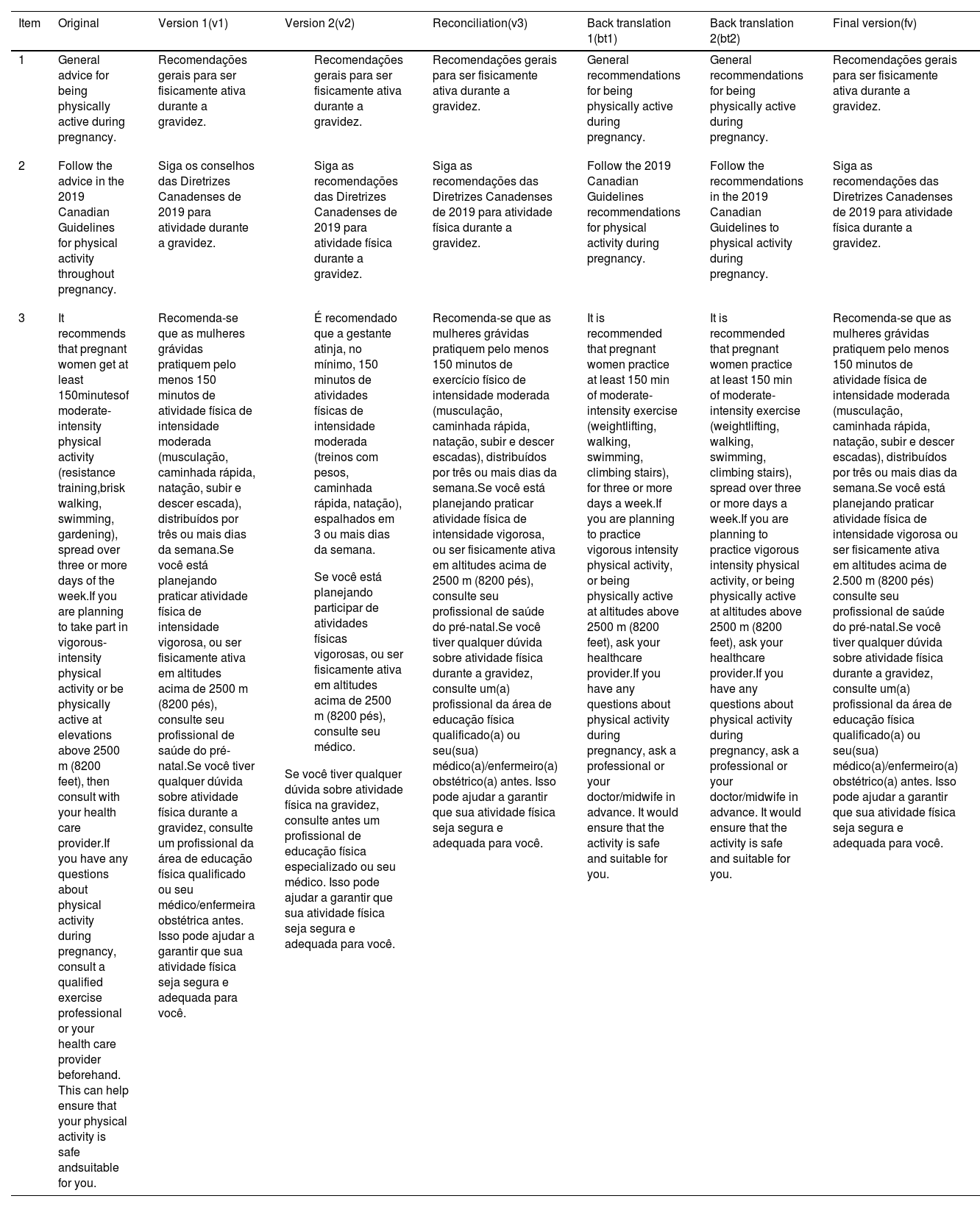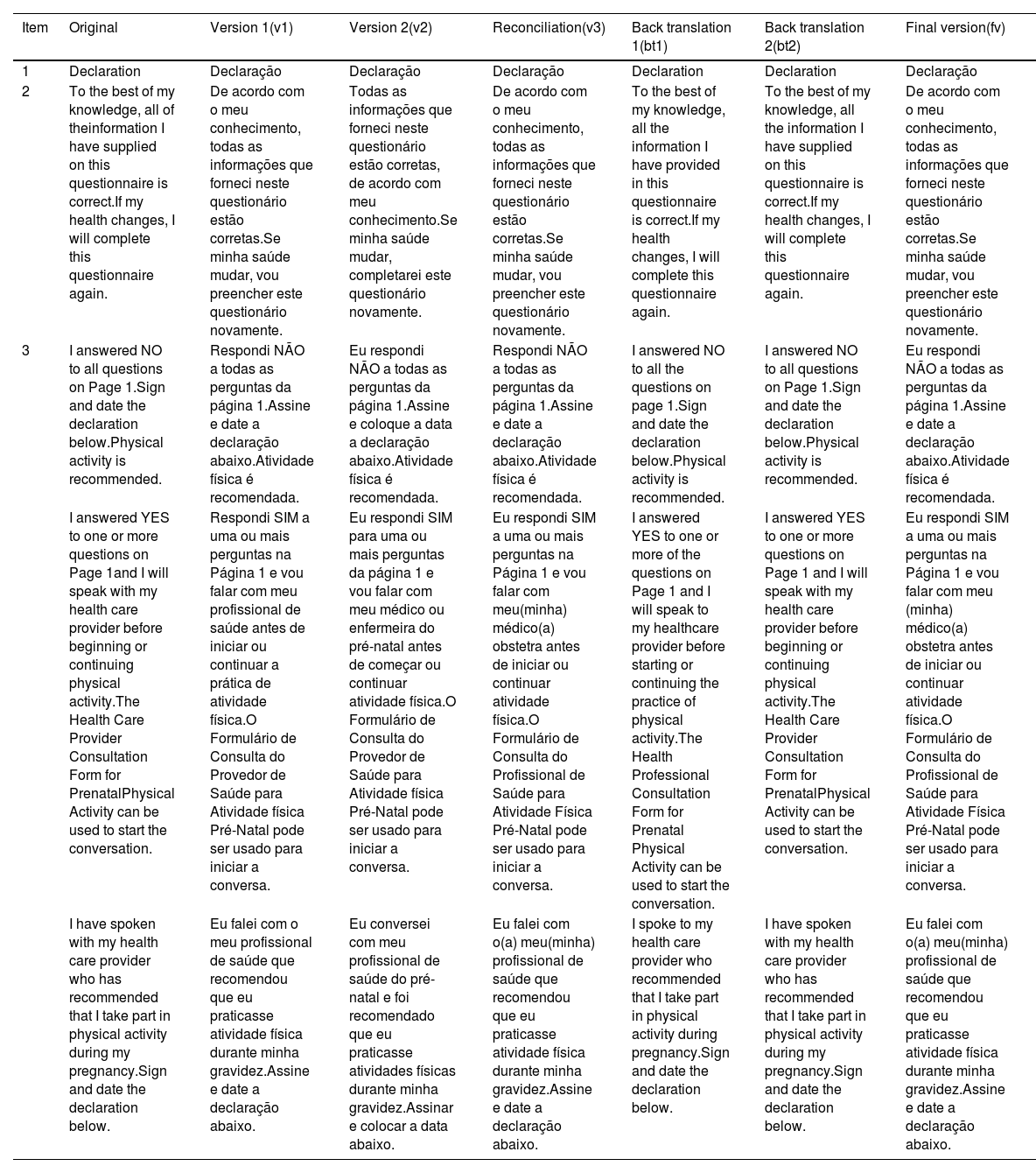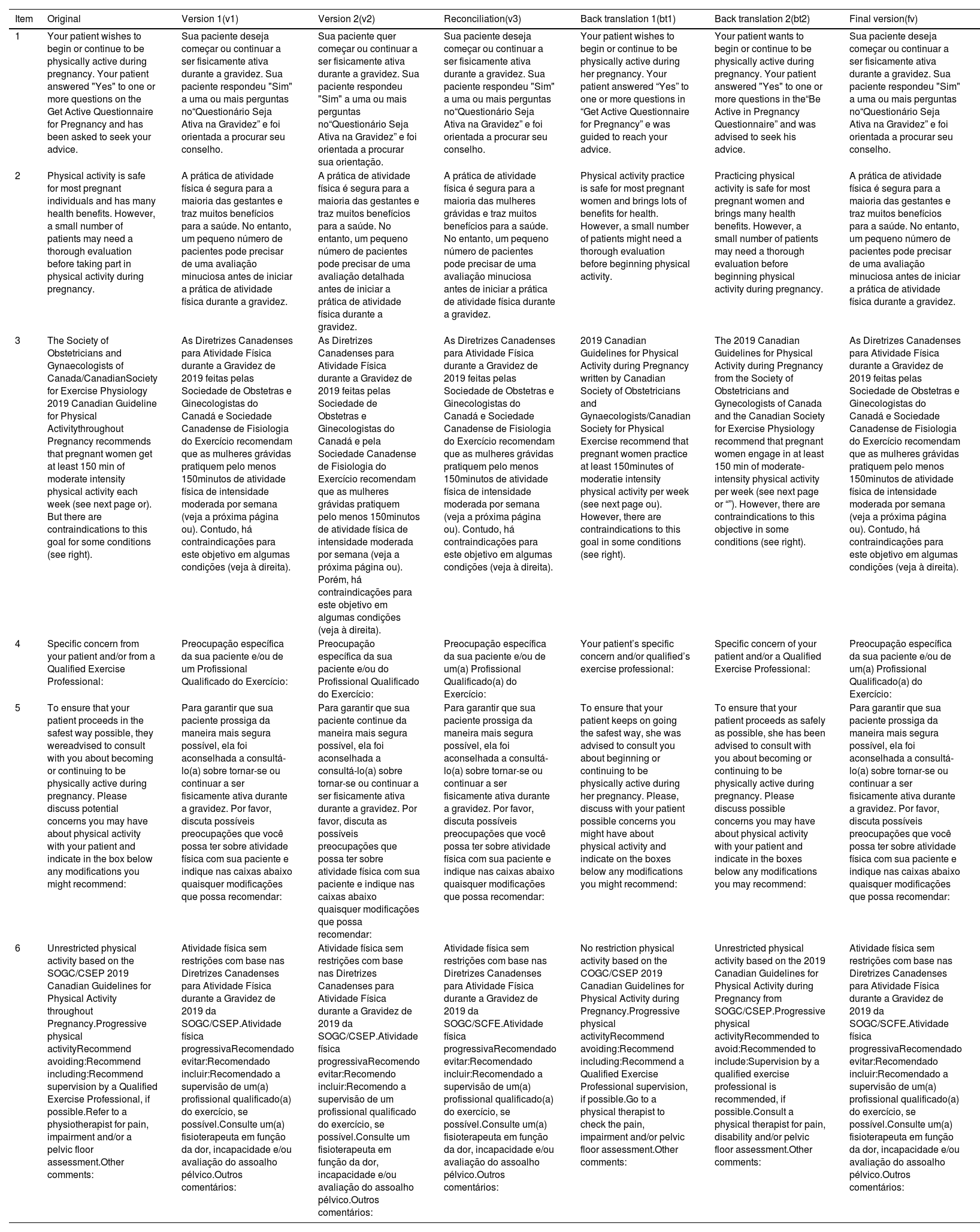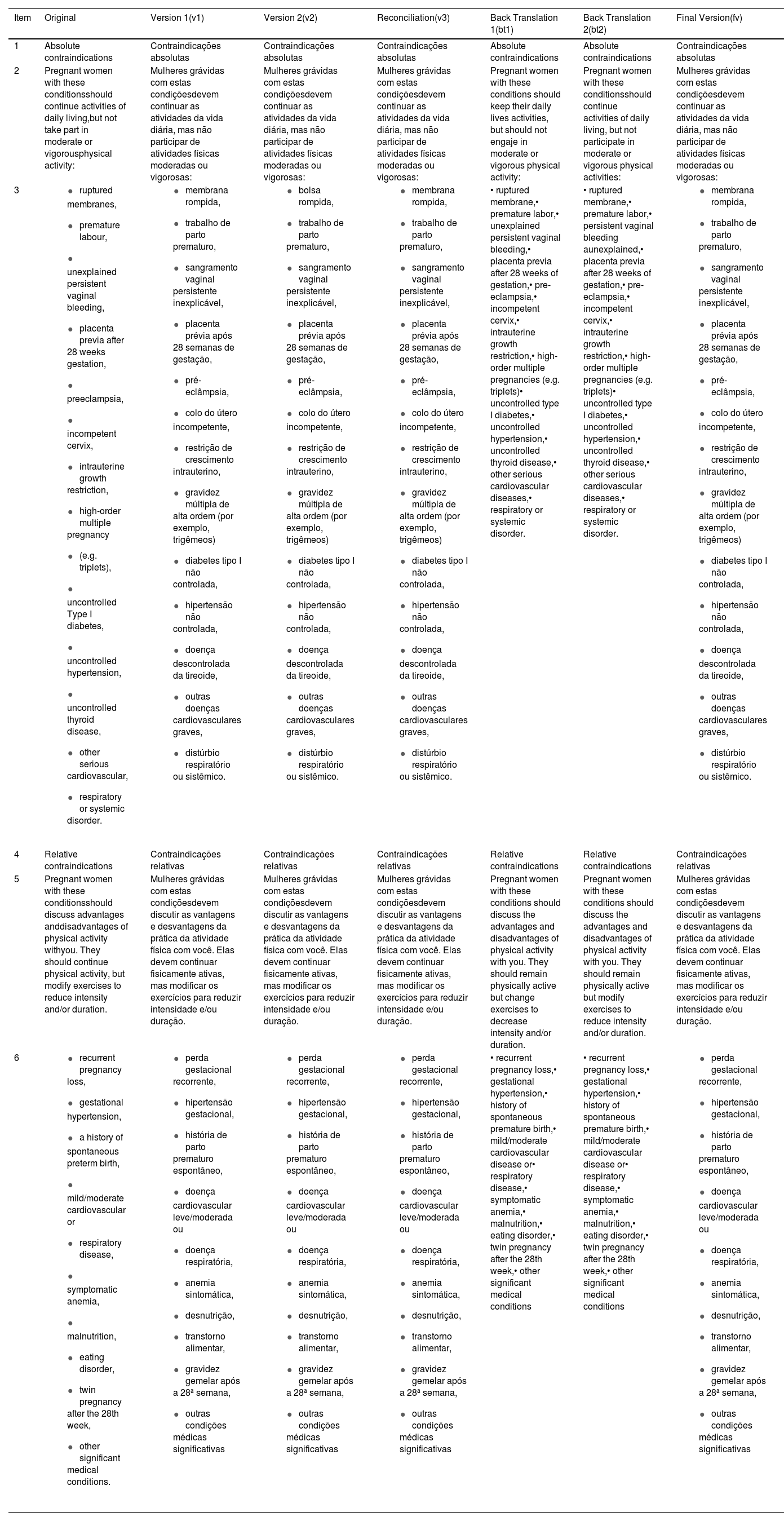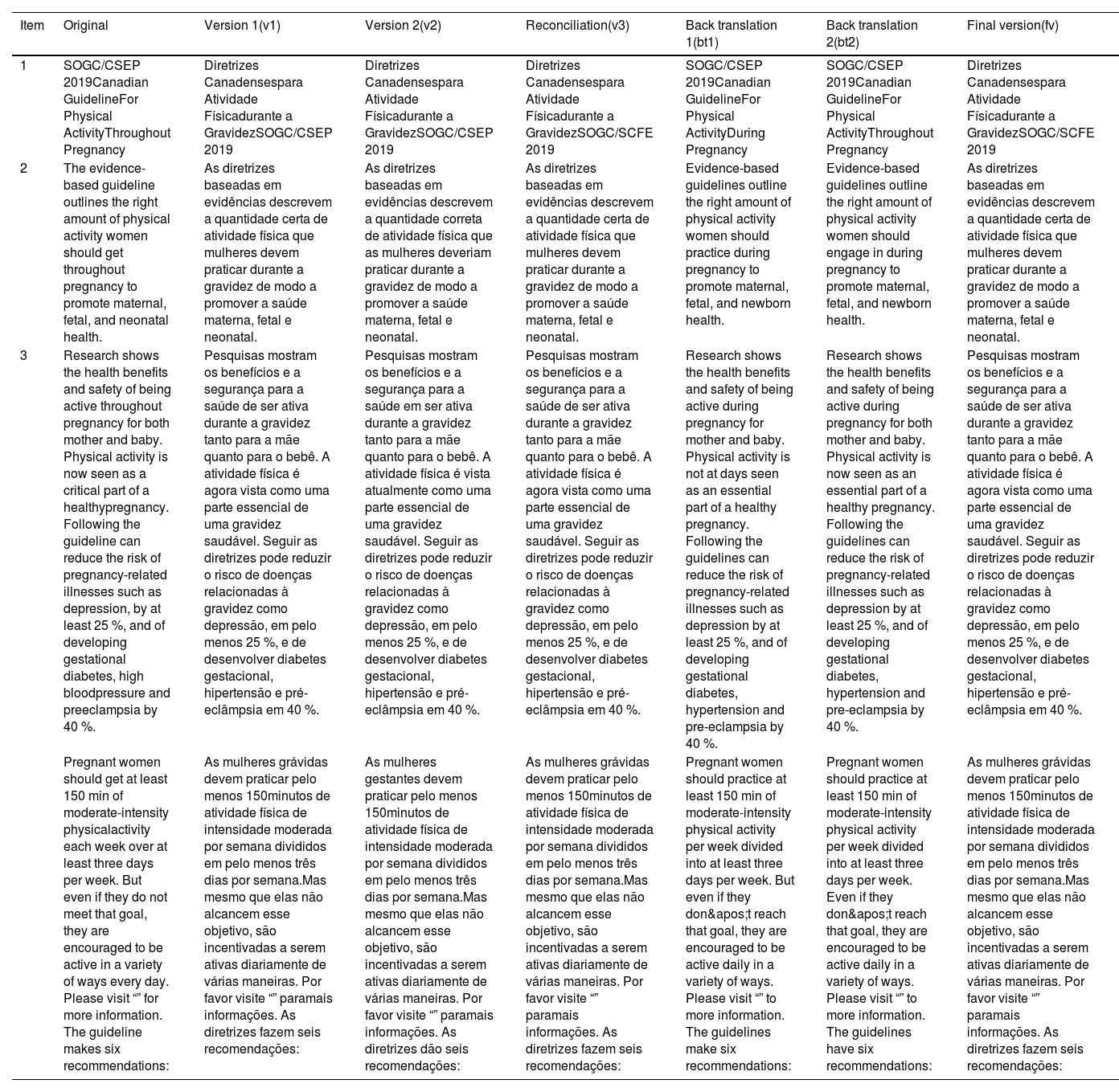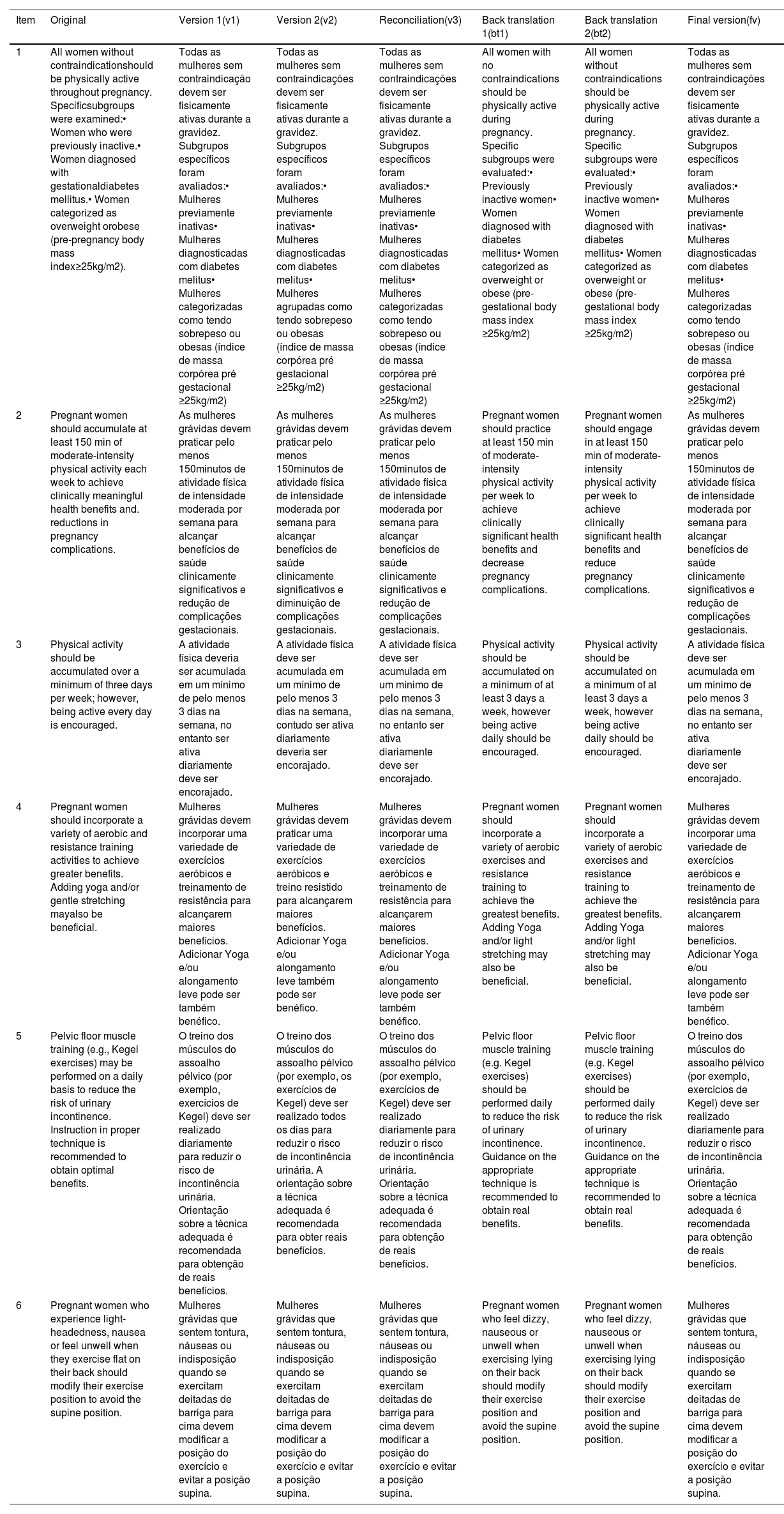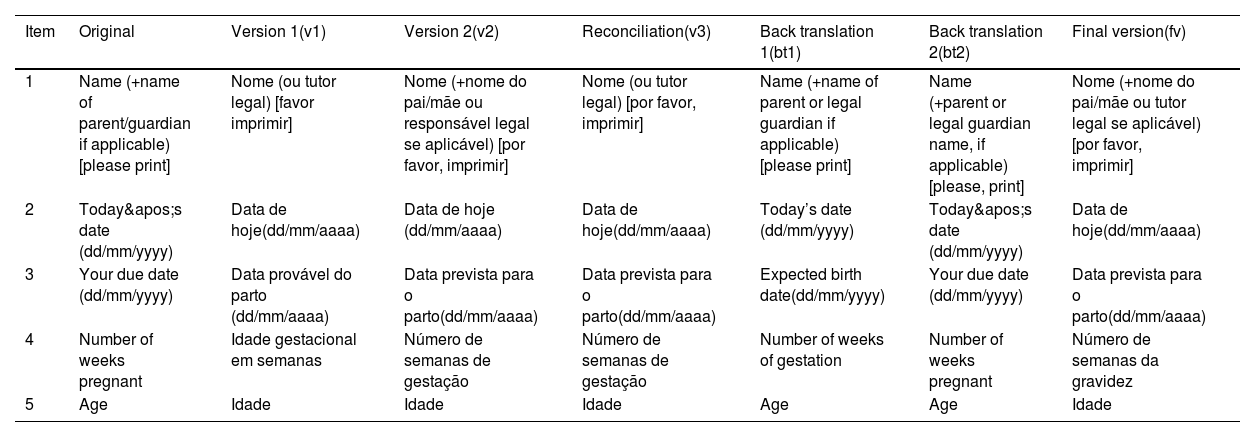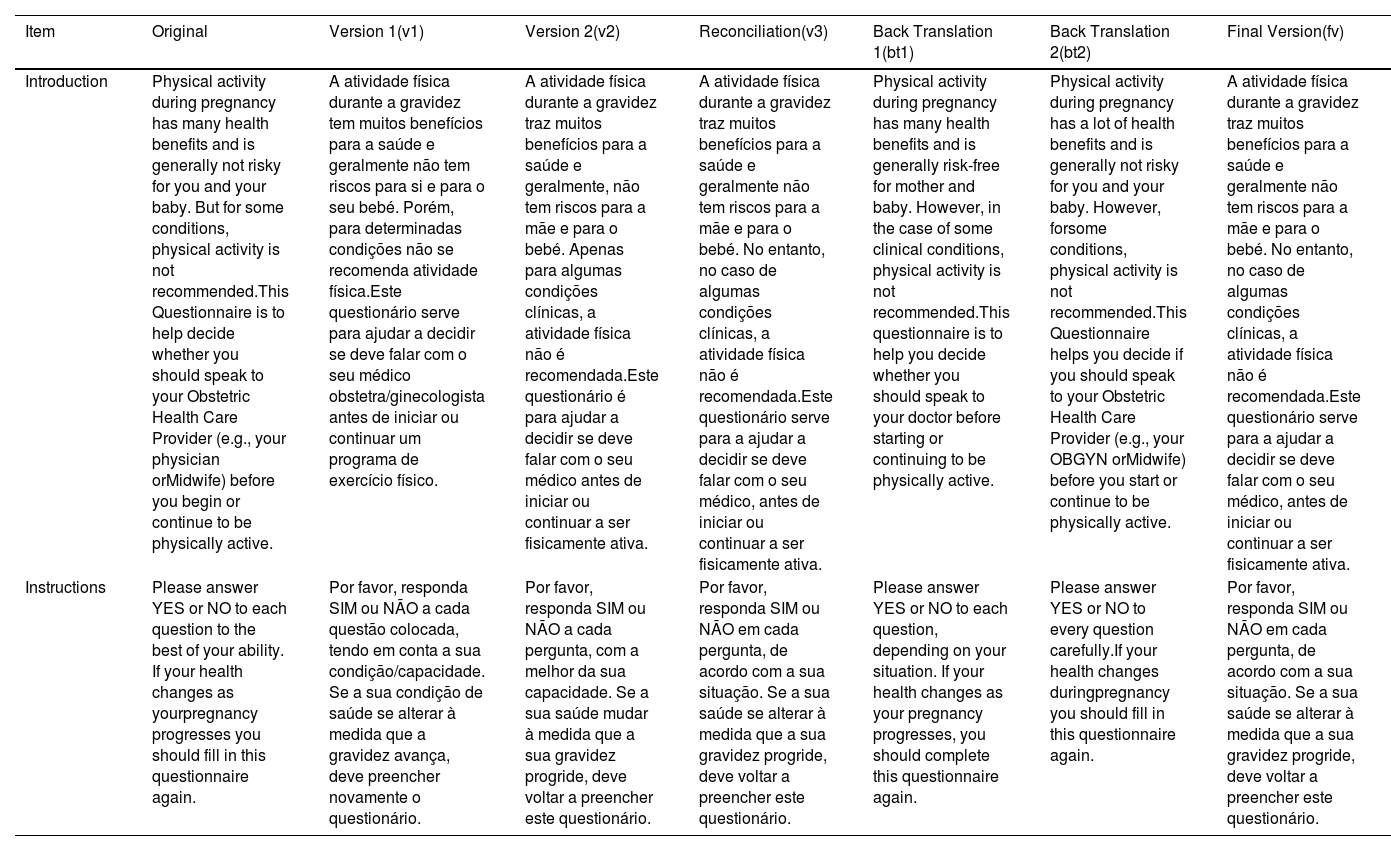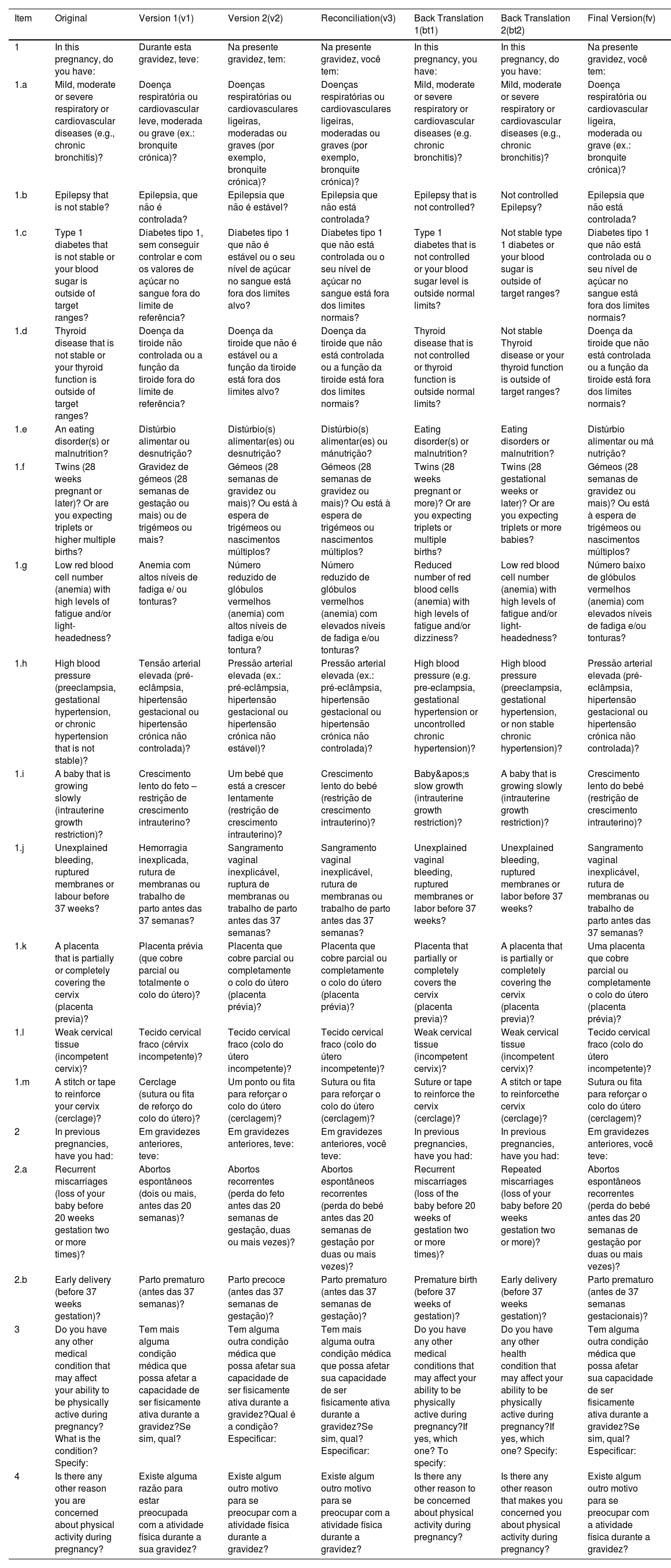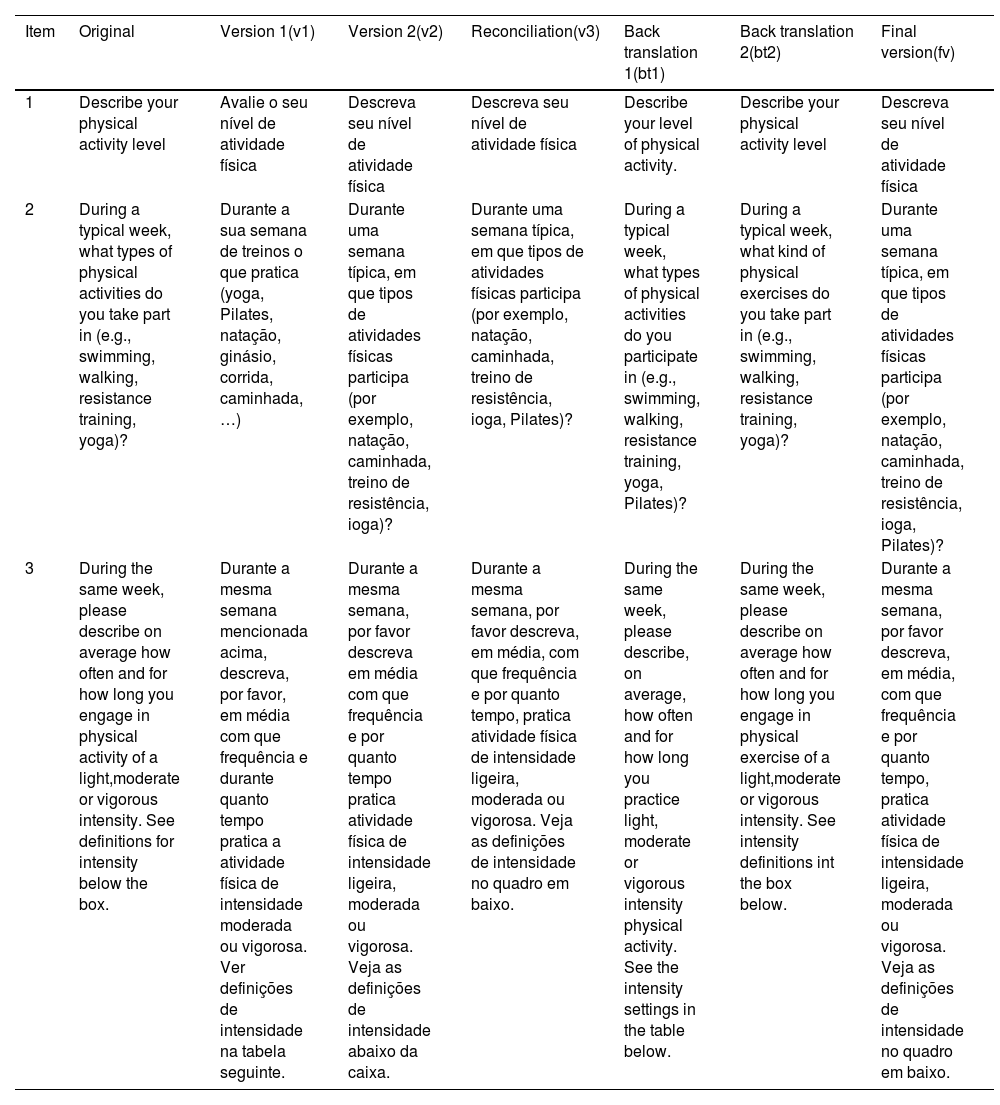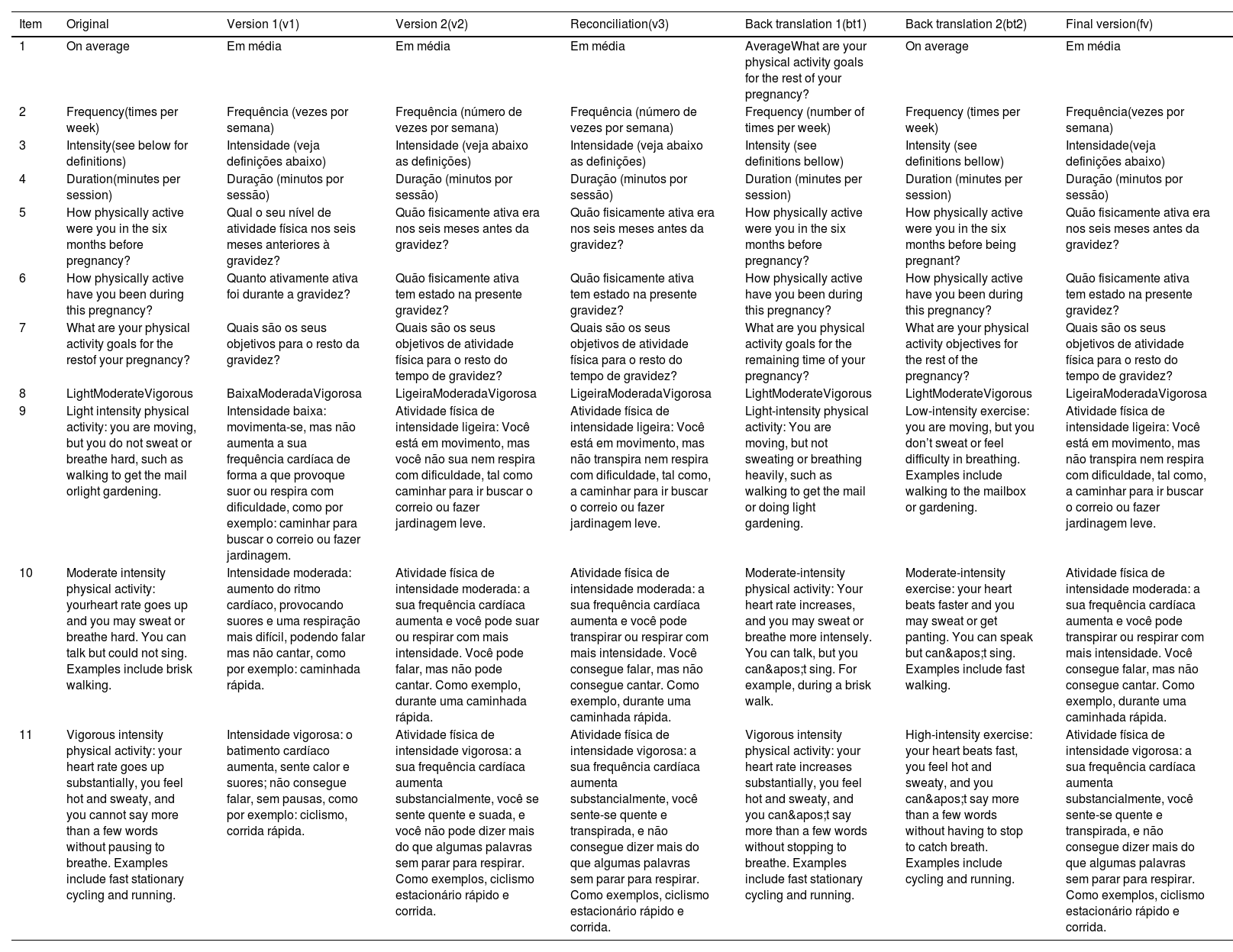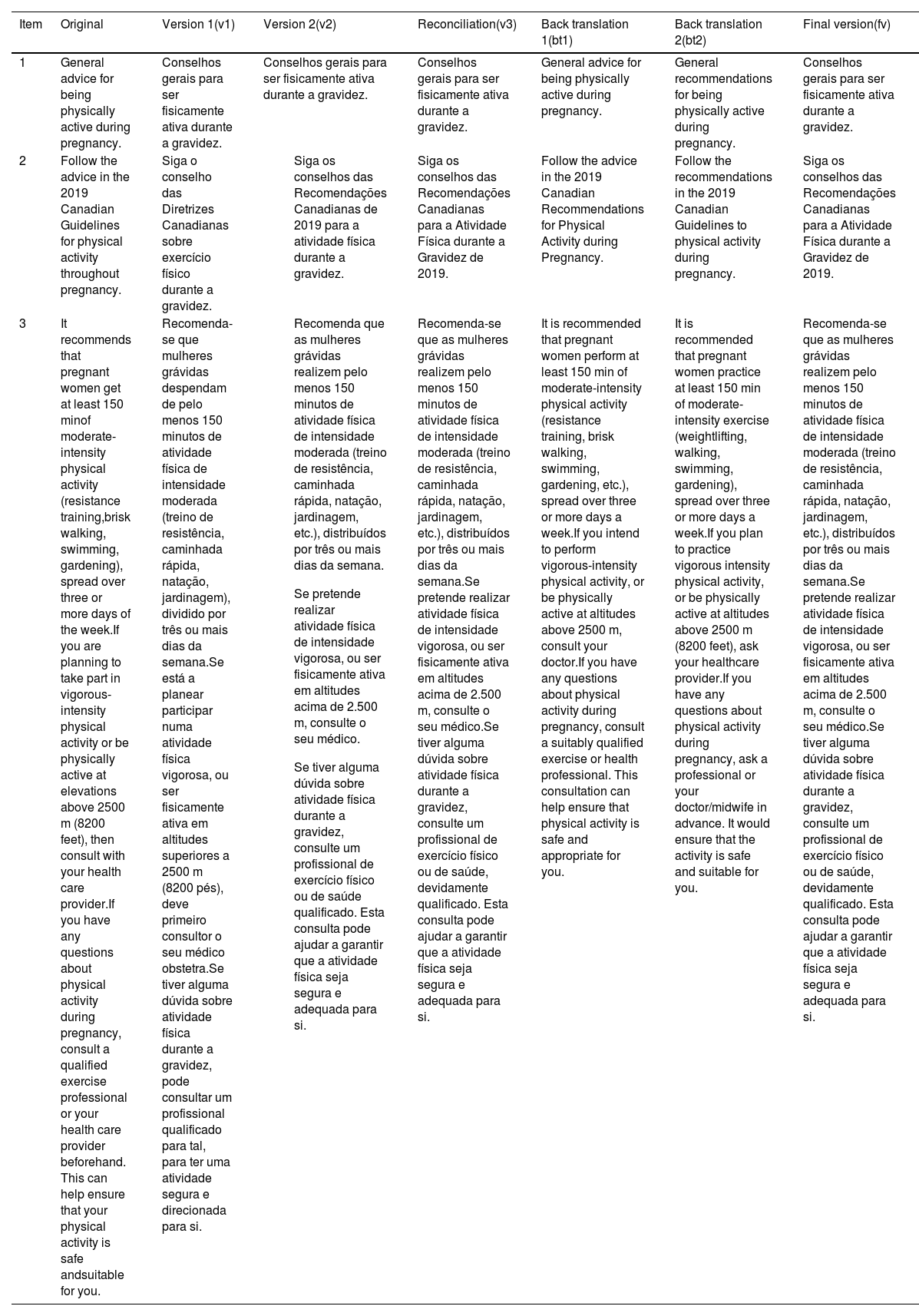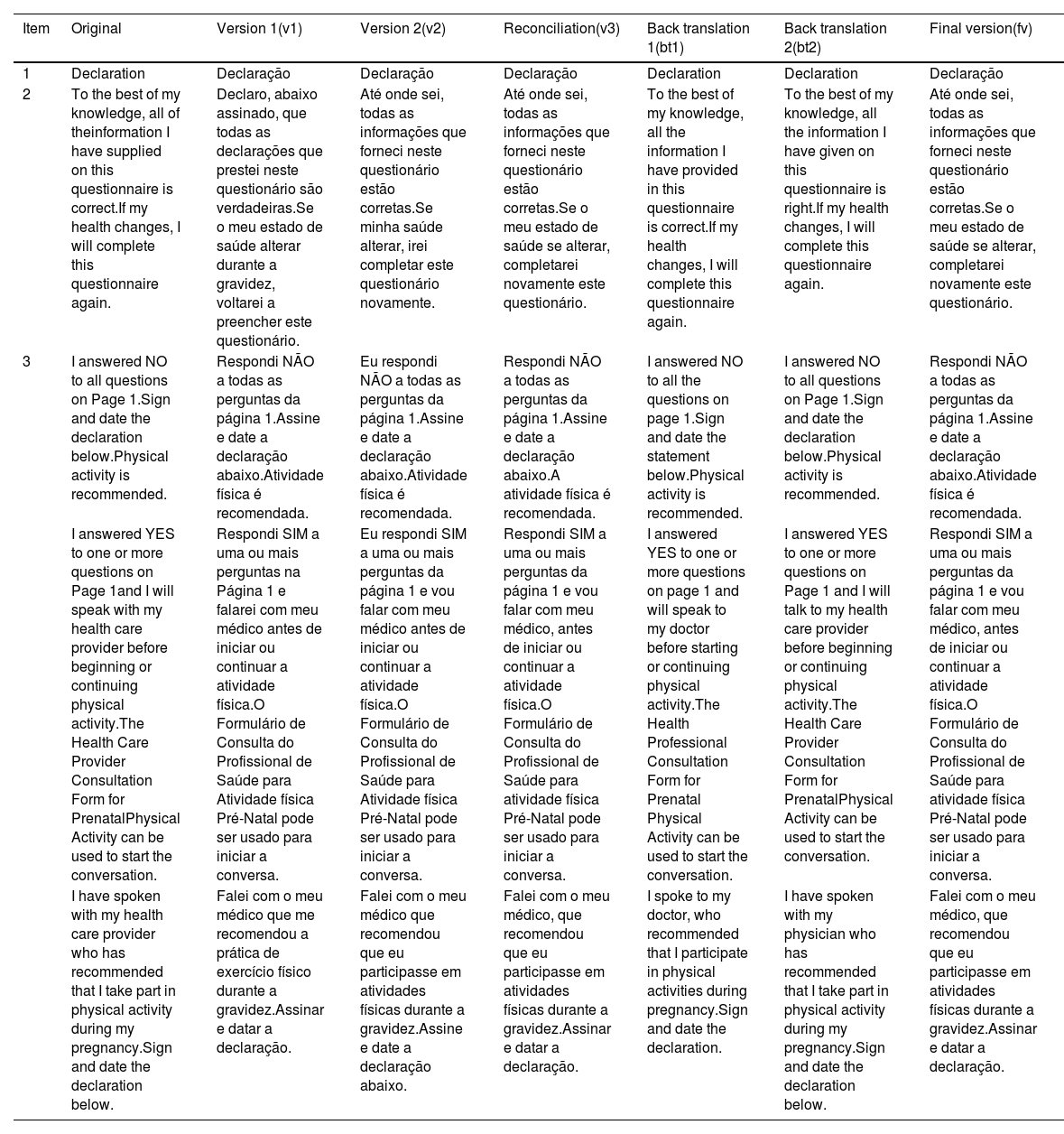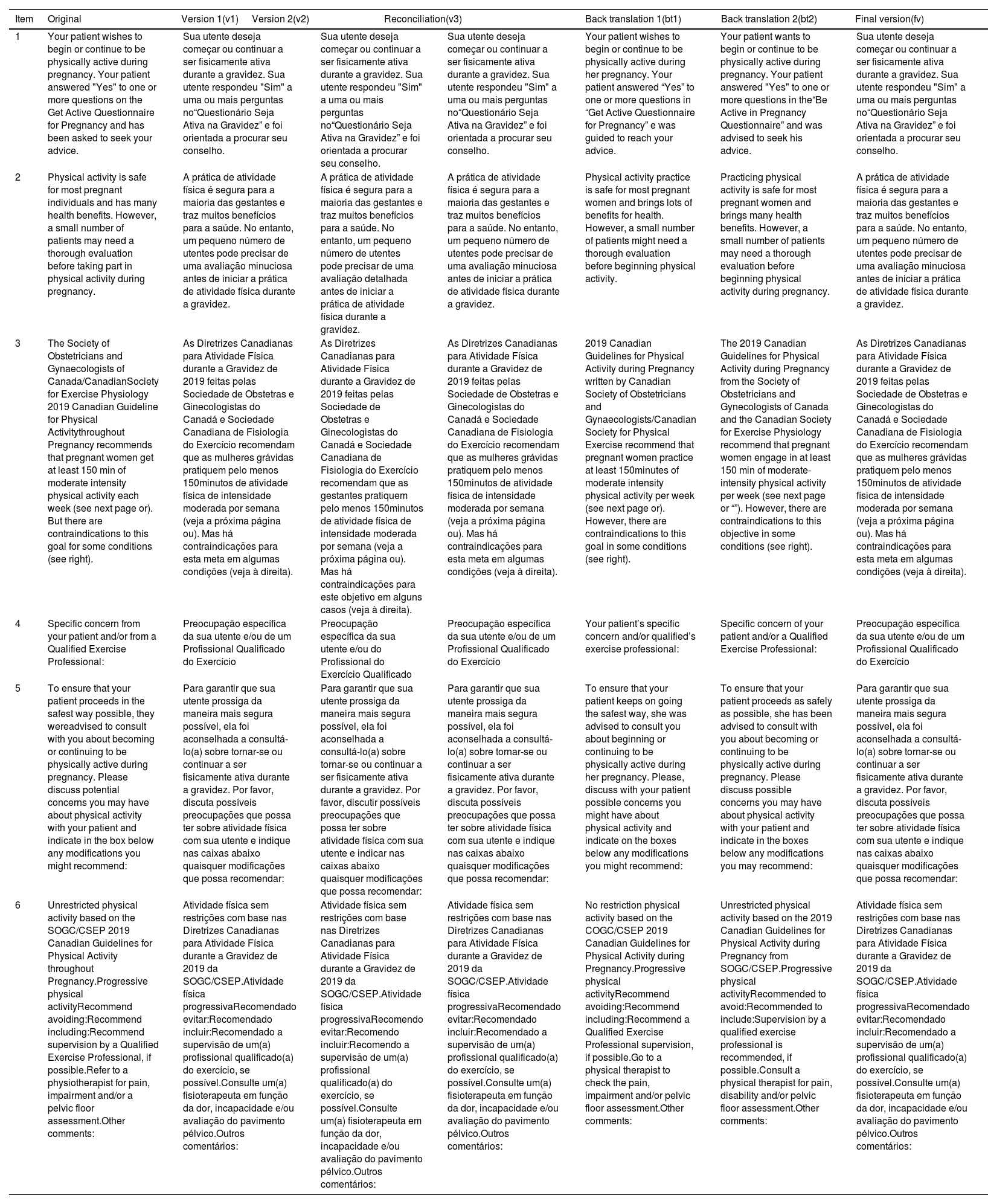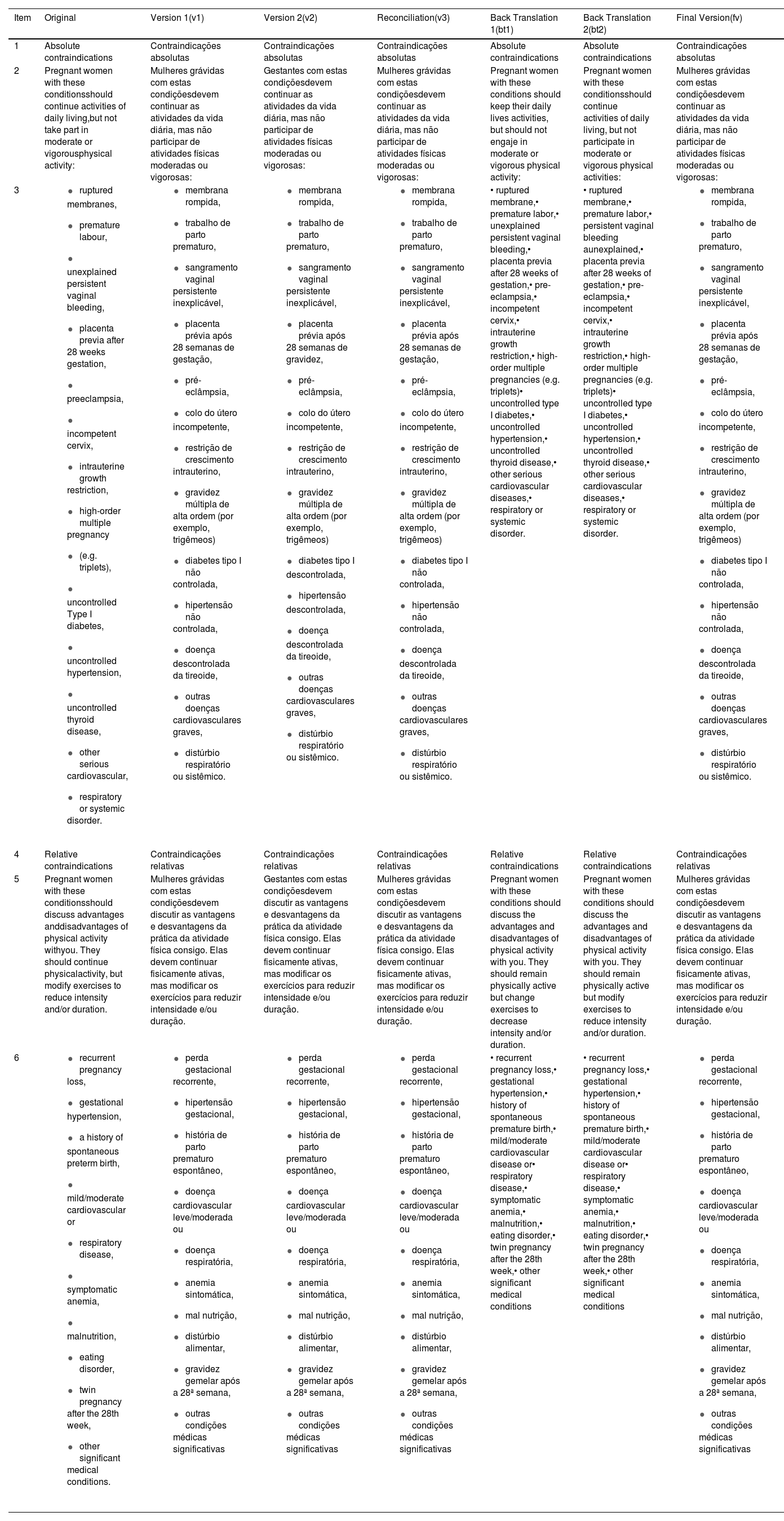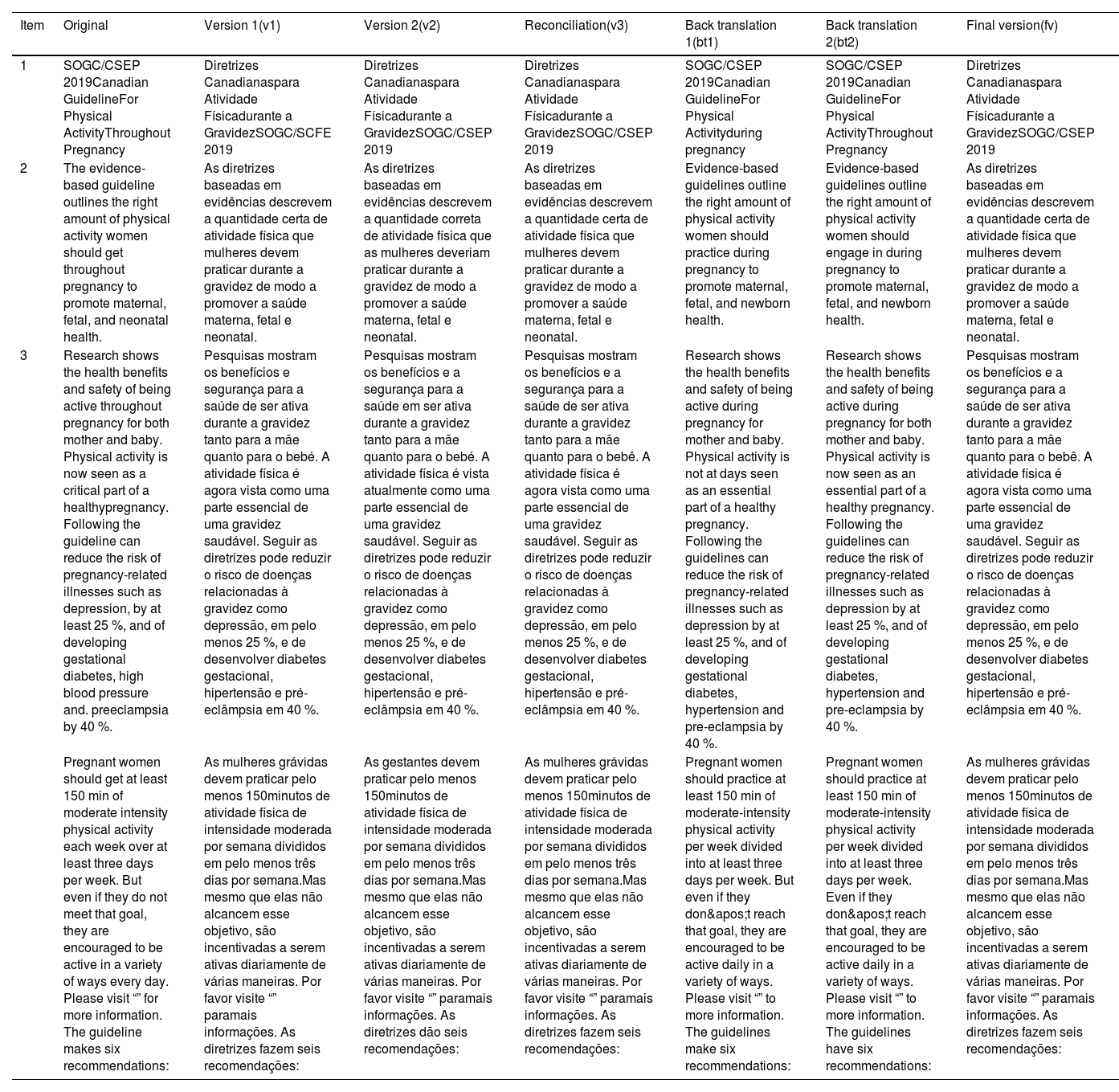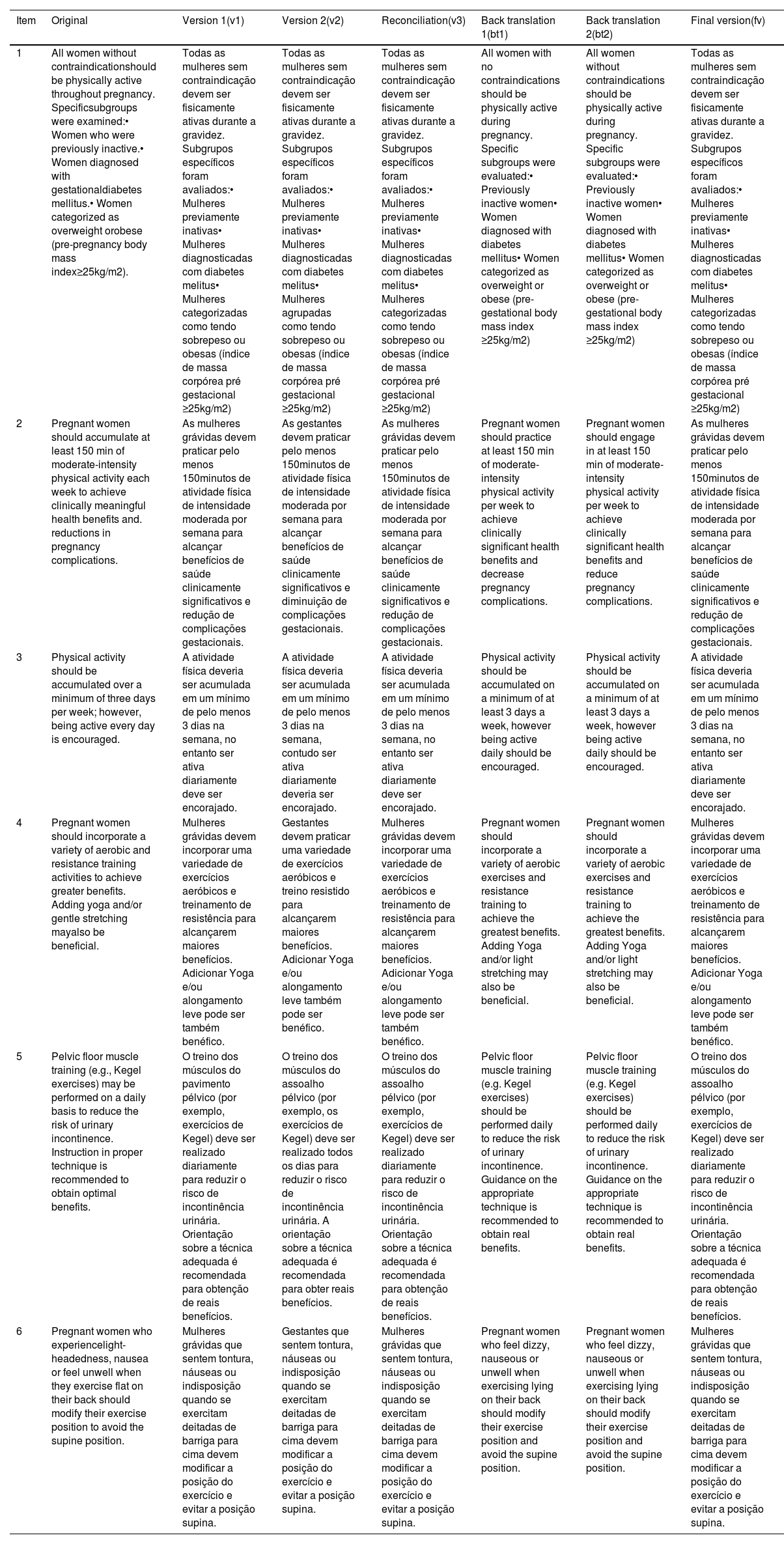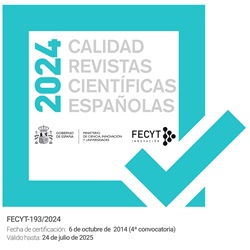Physical activity (PA) is established to be an essential component of a healthy lifestyle across the lifespan. During pregnancy, extensive research has demonstrated that physical activity protects against adverse obstetric and neonatal outcomes including excessive gestational weight gain,1,2 gestational hypertension,3 preeclampsia,3,4 gestational diabetes mellitus,3,5,2 surgical delivery,6,4 and macrosomia.7,2 Based on this body of evidence, the World Health Organization (WHO)7, endorsed by the Brazilian and Portuguese Ministry of Health,8,9 recommends all women without contraindication to prenatal PA accumulate at least 150 min of moderate intensity PA each week from a combination of aerobic and resistance exercises.10,11,9
Traditionally, PA Guidelines required that all women speak to their health care provider before beginning or continuing PA during pregnancy to screen for relative and absolute contraindications (e.g., preeclampsia, uncontrolled type 1 diabetes). However, this recommendation has been removed from more recent guidelines due to the strong evidence supporting the safety and benefits of prenatal PA.11 While medical clearance is no longer required, it remains important to screen for contraindications.
In 2021, the Canadian Society for Exercise Physiology (CSEP) developed and released an instrument called Get Active Questionnaire for Pregnancy (GAQ-P).12 The GAQ-P is designed to identify the small number of women who should seek medical advice as a first step to becoming or continuing to be physically active during the months that they are pregnant, and to help the majority of healthy pregnant women overcome any concerns they might have with getting or staying active.12 It was designed to be a self-administered physical activity pre-screening tool to empower women to be responsible for their own health and wellbeing during their pregnancy. The GAQ-P in conjunction with the Health Care Provider Consultation Form for Prenatal Physical Activity (HCP/CF-P) helps health care providers have a meaningful conversation about the benefits of physical activity with their pregnant patients.12
The GAQ-P and HCP/CF-P were originally published both in English and French, and have been endorsed by Canadian and International organizations (e.g., American College of Sports Medicine).12 These questionnaires are currently available in Polish,13 Spanish,14 and Colombian Spanish.15
Portuguese is considered the fifth language in the world, because it is spoken by around 260 million people.16 Brazil is the biggest country with a population of >200 million people and Portugal is the birthplace of the language. Moreover, the Portuguese is spoken in other seven countries in Africa (i.e., Angola, Mozambique, Cabo Verde, Guiné-Bissau, Guiné-Equatorial, São Tomé e Principe), and Asia (i.e., Timor-Leste). Therefore, our team sought to translate and conduct a cross-cultural adaptation of these questionnaires into Brazil’s and Portugal’s Portuguese to support prenatal PA in these countries.
MethodsThe cross-cultural adaptation and translation of the GAQ-P and HCP/CF-P for use in Portuguese followed the guidelines from the International Society for Pharmacoeconomics and Outcomes Research (ISPOR).17 This framework was developed by the ISPOR Translation and Cultural Adaptation group (TCA group), who performed a review of evidence-based current practice regarding translation and adaptation of instruments for clinical use. This ten-step framework has been described elsewhere and has been previously used to adapt other physical activity pre-screening tools.18 To conduct the translation and cross-cultural adaptation, we used the 10 steps suggested in ISPOR17 with the exception of harmonization. The study was approved by the Ethics Committee of Sport Sciences School of Rio Maior - Polytechnic Institute of Santarem, Portugal (CE 6A-2025/ESDRM) to include participants for the cognitive debriefing (see step 7 in the following section). All participants gave written informed consent.
The 10 step ISPOR framework translation process17 from English to Portuguese was conducted independently in Brazil and Portugal. Separate translations were conducted to reflect the unique cultural and linguistic aspects of these countries.
ResultsStep 1: Preparation
The CSEP and the chair of the GAQ-P Working Group gave written permission to the authors to translate the GAQ-P and HCP/CF-P into Portuguese. The Tables in the Appendix summarize the results of each step. The Brazilian translations are presented in Tables 1-BR to 7-BR (GAQ-P_BR) and in Tables 8-BR to 12-BR (HCP_BR), and the Portuguese translations are presented in Tables 1-PT to 7-PT (GAQ-P_PT) and in Tables 8-PT to 12-PT (HCP_PT) in the Appendix.
Step 2: Forward translation
Per the ISPOR framework, two independent translations (V1 and V2) of the original English instruments were conducted to facilitate the detection of potential errors and divergent interpretation of ambiguous terms. The translators for the forward translation from English to Portuguese were native speakers of Portuguese in their respective countries who were fluent in English as a second language. The Brazilian forward translation was completed by an obstetrician and physical therapist with 20 and 14 years of experience, respectively from different states in Brazil to ensure the cultural adaptations. The Portugal forward translation was conducted by two exercise physiologists with graduate degrees in Exercise Science specializing in exercise during pregnancy and the postpartum period.
Step 3: Reconciliation
In order to resolve discrepancies and seek agreement between individual linguistic styles of the translators, a native Portuguese speaker (an obstetrician with 15 years of experience for the Brazilian version and an obstetric physical therapist with 22 years of experience for the Portuguese version) reviewed both V1 and V2 to resolve differences. These people were not involved in the preparation of V1 and V2, allowing a third version of the instruments to be created (V3). In the event of discrepancies between V1 and V2, the most colloquial expression was chosen. The reconciliation suggested minor changes in some phrases.
Step 4: Back translation
Back translation of the reconciled version (i.e., V3) was conducted by four obstetricians with >15 years of experience (two for the Portuguese, and two for the Brazilian versions). They were native English speakers who spoke Brazilian or Portugal Portuguese as a second language. They were not provided with the original instruments or V1 and V2. Two independent back translations of V3 for each country were produced in English (BT1 and BT2, see Tables in the Appendix).
Step 5: Revision of the back translation
The two versions of the back translations of each instrument (BT1 and BT2) for Brazilian and Portugal Portuguese were reviewed and compared to each other, as well as the original English versions by the developer of original English instruments. The two back translations were deemed to be very similar to each but one best represented the original English version. There were minor discrepancies identified between the original document and the selected back translation. However, those words were substituted for better options to maintain original intent (see details in Tables in the Appendix.).
Step 6: Harmonization
The ISPOR Guidelines recommend that when an instrument is being adapted to other languages, the back translations produced in other countries should be compared. As no other back translations were known to exist for the GAQ-P or HCP/CF-P this step was not included in the process.
Step 7: Cognitive debriefing
According to ISPOR guidelines,17 the newly translated documents (Brazil’s and Portugal’s V3) should be tested for cognitive equivalence by five to eight people from each target country who are native speakers of the target language who adequately represent the target population. The goal of cognitive debriefing is to identify the level of understanding, the semantic equivalence of the translated version, and highlight inappropriate or confusing terms or phrases.
Our target population was native speakers of Brazil’s and Portugal’s Portuguese divided in 3 groups: 1. Pregnant women, 2. Exercise professionals (physical educators/exercise physiologists and physiotherapists specialized in women’s health), and 3. Physicians/obstetricians. The instruments were sent by e-mail with a questionnaire made using Google Forms platform. For each item, respondents were asked if they understood the content and if there were any difficulties or suggestions for a better word or sentence choice.
Brazil and Portugal have very diverse socio-economic, cultural and linguistic differences between different regions in the country which made us recruit a larger number of stakeholders to ensure these instruments could be understood in all regions.
- Brazil’s process
There were 41 respondents from all five regions of Brazil including 15 pregnant women (25.3 ± 6.34 years old; minimum of 15 years of education), 13 physicians/obstetricians (47.2 ± 3.31 years old; minimum of 10 years of practice in the field) and 13 exercise professionals (31.4 ± 4.71 years old; minimum of 10 years of practice in the field). They were from Midwest (Goiás state), Southeast (Sao Paulo and Minas Gerais states), South (Paraná and Santa Catarina states), Northeast (Ceará and Pernambuco states) and North (Pará state) (Table 1).
- Portugal’s process
There were 33 respondents from all six regions of Portugal including 11 pregnant women (30.2 ± 5.24 years old; minimum of 15 years of education), 11 physicians/obstetricians (45.2 ± 4.27 years old; minimum of 10 years of practice in the field) and 11 exercise professionals (27.3 ± 3.21 years old; minimum of 10 years of practice in the field). They were from North (Porto, Braga), Capital (Lisbon), Alentejo (Portalegre and Setubal), Algarve (Faro), Madeira (Funchal) and Azores (Ponta Delgada) (Table 2).
Step 8: Revision of debriefing results
The debriefing results were reviewed and discussed between the researchers/authors. After considering all the answers and the modifications suggested by the participants, no additional changes were made to V3 as the suggestions did not affect the comprehension of the original content. Brazil and Portugal have in their territory different dialects and the use of regional words, even if suggested by the health and exercise professionals or pregnant women, was avoided.
Step 9: Syntax and orthographic revision
A professional syntax and orthographic revision of V3 was done to check for minor errors which might have been missed during the translation process. The final version of the Portugal and Brazilian translations of the GAQ-P and HCP/CF-P were reviewed and accepted by CSEP with no additional changes. The final version of the documents is presented in Figs. 1–4.
Step 10: Final report
The present study can be considered as a detailed report since it provides a template for other authors who wish to translate these questionnaires into another language. This final report is expected to facilitate future adaptations of the same instrument to other cultures or languages, and to enable the experience to be transferred to other self-reported instruments, as recommended by the TCA group.17
DiscussionOver the last five years we have seen a transformational shift in our view of physical activity from a recommended activity to a prescription for enhanced maternal/fetal health. Yet, <21 % of pregnant women in Brazilian capitals are sufficiently active to accumulate the 150 min per week of moderate intensity physical activity recommended in current prenatal PA guideline. In Portugal, a recent study reported that a total of 67.7 % of pregnant women complied with international physical activity recommendations.19 However, the sample included 31 pregnant women with obesity that responded to PPAQ questionnaire.20
In non-pregnant populations, excessive referrals to healthcare providers has been cited as a barrier becoming physically active.21 Until recently, all pregnant women were required to obtain medical clearance prior to engaging in physical activity during pregnancy. With the publication of extensive research demonstrating the safety and benefits of prenatal physical activity, most guidelines have removed this requirement. However, identifying the small number of women with contraindications for PA remains important.
In the current study we outline the steps taken to translate and adapt the GAQ-P and HCP/CF-P to Portuguese following the ISPOR framework. These documents were developed to reduce a key barrier to prenatal physical activity and identify the small number of women who require medical consultation about physical activity during pregnancy. The Health Care Provider Consultation Form for Prenatal Physical Activity was designed to facilitate communication between the pregnant women, qualified exercise professional and obstetric health care provider about potential health concerns regarding PA during pregnancy. However, an essential component of the ISPOR framework is adapting the translated documents to fit the cultural context of the target population and country. Cultural adaptations were made, and not just translations. While ISPOR guidance only requires 5–8 representative individuals to fit this need, our team expanded recruitment to all states and regions of both countries to ensure that the diverse regions and cultures of Brazil and Portugal were represented. An example of cultural adaptation in the Brazilian translation was the exchange of the expressions "walking to get the mail” and light gardening" for "going to the bus stop" or "carrying groceries" since gardening and getting mail are not common habits for Brazilian women in the majority of the population. In Portugal, however, these are common habits, so the expressions were kept as in the original.
All other aspects of the ISPOR frameworks were followed except for “harmonization”. French and English are the two official languages of Canada, and the French translation of the GAQ-P and Health Care Provider Consultation Form was performed directly by CSEP. The translation to Portuguese is the first translation and cultural adaptation of these instruments, thus, the harmonization step with other back translations could not be performed.
Importantly, this manuscript provides a template for future translations and cross-cultural adaptations of the GAQ-P and Health Care Provider Consultation Form to ensure consistency and accuracy of future translations. Future work to facilitate wide-spread implementation of these instruments may serve to remove a key barrier to PA during pregnancy and increase engagement in this health-promoting behavior. The translated documents in Figs. 1–4 may be used by pregnant women, qualified exercise professionals and health care providers to achieve this important goal.
The authors declare that there are no conflicts of interest.
The authors wish to thank CSEP for supporting the translation of the original documents, and the translators Livia P Tateyama, Duncan F Potter, Gabriel G Carvalho, Lydia M H Brown, Inês F Pereira and Maria João Oliveira. The authors wish to thank all stakeholders who volunteered for the Cognitive Debriefing stage of the translation process. MHD is supported by the Christenson Professor in Active Healthy Living. RSR and BC are supported by national funds through FCT – Fundação para a Ciência e Tecnologia - Foundation for Science and Technology, I.P. (Portugal), within the scope of the project Active Pregnancy [2023.14896.PEX] (PI: Rita Santos-Rocha): https://sprint-sci.com/en/research-innovation/research-projects-external/active-pregnancy-202314896pex; YouTube Channel: @GravidezAtiva-ActivePregnancy.
Summary of results of translation and adaptation of the GAQ-P into Brazilian Portuguese according to ISPOR’s recommendations – Title and Personal information on Page 1.
Summary of results of translation and adaptation of the GAQ-P into Brazilian Portuguese according to ISPOR’s recommendations – Introduction and instructions on Page 1.
Summary of results of translation and adaptation of the GAQ-P into Brazilian Portuguese according to ISPOR’s recommendations – Main Table on Page 1.
Summary of results of translation and adaptation of the GAQ-P into Brazilian Portuguese according to ISPOR’s recommendations – Physical level question and instructions for the box on Page 2.
Summary of results of translation and adaptation of the GAQ-P into Brazilian Portuguese according to ISPOR’s recommendations – Physical activity level question and box on Page 2.
Summary of results of translation and adaptation of the GAQ-P into Brazilian Portuguese according to ISPOR’s recommendations – General advice box on Page 2.
Summary of results of translation and adaptation of the GAQ-P into Brazilian Portuguese according to ISPOR’s recommendations – General advice box on Page 2.
Summary of results of translation and adaptation of the HCP into Brazilian Portuguese according to ISPOR’s recommendations – Title and Personal information on Page 1.
Summary of results of translation and adaptation of the HCP into Brazilian Portuguese according to ISPOR’s recommendations – Left side on Page 1.
Summary of results of translation and adaptation of the HCP into Brazilian Portuguese according to ISPOR’s recommendations – Right side on Page 1.
Summary of results of translation and adaptation of the HCP into Brazilian Portuguese according to ISPOR’s recommendations – Title and introduction paragraph on Page 2.
Summary of results of translation and adaptation of the HCP into Brazilian Portuguese according to ISPOR’s recommendations – Recommendations on Page 2.
Summary of results of translation and adaptation of the GAQ-P into Portugal’s Portuguese according to ISPOR’s recommendations – Personal information on Page 1.
Summary of results of translation and adaptation of the GAQ-P into Portugal’s Portuguese according to ISPOR’s recommendations – Introduction and instructions on Page 1.
Summary of results of translation and adaptation of the GAQ-P into Portugal’s Portuguese according to ISPOR’s recommendations – Main Table on Page 1.
Summary of results of translation and adaptation of the GAQ-P into Portugal’s Portuguese according to ISPOR’s recommendations – Physical level question and instructions for the box on Page 2.
Summary of results of translation and adaptation of the GAQ-P into Portugal’s Portuguese according to ISPOR’s recommendations – Physical activity level question and box on Page 2.
Summary of results of translation and adaptation of the GAQ-P into Portugal’s Portuguese according to ISPOR’s recommendations – General advice box on Page 2.
Summary of results of translation and adaptation of the GAQ-P into Portugal’s Portuguese according to ISPOR’s recommendations – General advice box on Page 2.
Summary of results of translation and adaptation of the HCP into Portugal’s Portuguese according to ISPOR’s recommendations – Title and Personal information on Page 1.
Summary of results of translation and adaptation of the HCP into Portugal’s Portuguese according to ISPOR’s recommendations – Left side on Page 1.
Summary of results of translation and adaptation of the HCP into Portugal’s Portuguese according to ISPOR’s recommendations – Right side on Page 1.
Summary of results of translation and adaptation of the HCP into Portugal’s Portuguese according to ISPOR’s recommendations – Title and introduction paragraph on Page 2.
Summary of results of translation and adaptation of the HCP into Portugal’s Portuguese according to ISPOR’s recommendations – Recommendations on Page 2.
- Home
- All contents
- Publish your article
- About the journal
- Metrics

